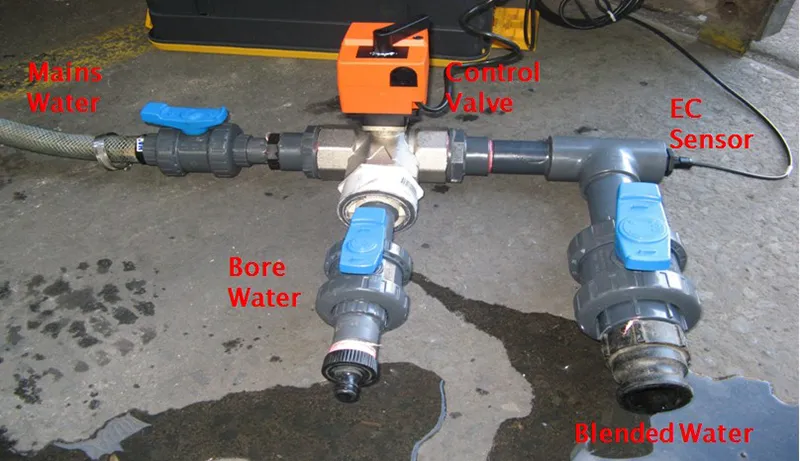Blending or shandying are the terms used to describe the mixing of water sources to a predetermined standard. Water sources may include mains, dam, rain, bore or recycled.
The technique is well known in industries such as open plan farming, protected crop farming, livestock, vineyards and olive production.
The aims of blending include:
Depending on your requirements the blending system can be manual to fully automatic, or combinations. The fully automatic system generally provides better control and accuracy in blending, and they have functions to shut off the system if problems arise.
Blending in tanks is possible but care will need to be taken that adequate mixing is being achieved. It is a known phenomenon that waters of different salinity will stratify and not readily mix as would be supposed. Therefore, if the addition of the mixing water can be added prior to a pump, or an inline static mixer, that will ensure a homogenous result. This is also true when adding chemicals to a tank for other farm duties.

Inlet water to the tank can be piped into the body of the water to create in-tank turbulence, but there must be adequate precaution taken to prevent siphonage or cross contamination. Each situation must be assessed for its merit or risk.
Manual valves are installed in the pipeline of each water source. The valves are manually adjusted accordingly until an accurate blend is achieved. A manual EC meter is used to measure the salinity of the water.
Low voltage actuated valves are installed in the pipeline of each water source. A low voltage potentiometer is used to drive the actuators until the valves are adjusted and an accurate blend is achieved. The EC measurement can be either taken with a handheld meter or a sensor can be fitted in to the blended stream which will indicate salinity on an integrated readout. Solar assistance can be used in remote areas.
Low voltage actuated valves are installed in the pipeline of each water source. A programmed controller adjusts the valves continually to ensure the EC is always correct. A conductivity cell is used to measure water salinity. The controller will close the saline water supply if a problem occurs. The controller can send an alarm to a mobile phone. Solar power and battery backup can be installed.